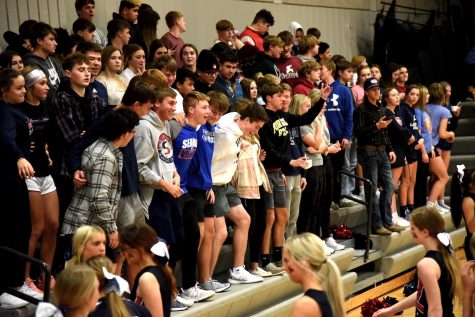Major League Baseball continues enforcing luxury tax penalties across league
After a long winter break, America’s pastime is back. In the Major League Baseball offseason, many player transactions have taken place.
We all know about our “hometown team” the Kansas City Royals’ inability to reach an agreement with Eric Hosmer. But why are the Royals unable to keep a player that has been brought up through the minor league system? The Royals are what those in baseball call a small market, with them are the Milwaukee Brewers, Cincinnati Reds, Oakland Athletics, and the Tampa Bay Rays. In contrast to the small markets are the big markets that include, the New York Yankees, Boston Red Sox, Philadelphia Phillies, and the New York Mets.
Market sizes all have to do with the amount of revenue that each organization brings in a year. According to Forbes, the New York Yankees brought in approximately $526 million, compared to the small market of Milwaukee bringing in only $239 million, or even closer to home, Kansas City with a revenue of $246 million.
In an effort to bring some balance to the league, Major League Baseball has a “Luxury Tax.” Teams that spend more than a preset amount on payroll are subject to this tax. The penalty / tax varies depending on how much over the limit they spend. If a team is over by $40 million, they have to pay a 12.5 percent tax on the price that they are over. Once the team passes the 40 million, they will have to pay 42.5 percent of the amount they went over, and if passed two years in a row, then the tax is raised to 45 percent. All royalties are paid to the league and then redistributed to all teams who did not surpass the specified amount.
Larger money markets are still able to go over the cap, pay all of the royalties, and are still able to stay afloat financially as an organization. The Yankees have passed the cap since 2003, the Dodgers since 2013, the Boston Red Sox, and San Francisco Giants are now in their third year of paying the tax. Going over this shows that the organizations are able to obtain more high profile players. The Boston Red Sox top the 2018 charts, marking an approximate $235 million dollar payroll, compared to the Oakland Athletics’ nearly $68 million.
To combat the issue of the big market rule, I believe that the league should impose a hard cap. This way teams are only able to pay all of their players a certain amount of money per year, and cannot go over no matter the circumstance. A hard salary cap would essentially make the major league more competitive and keep the few large markets from ruling the league.












